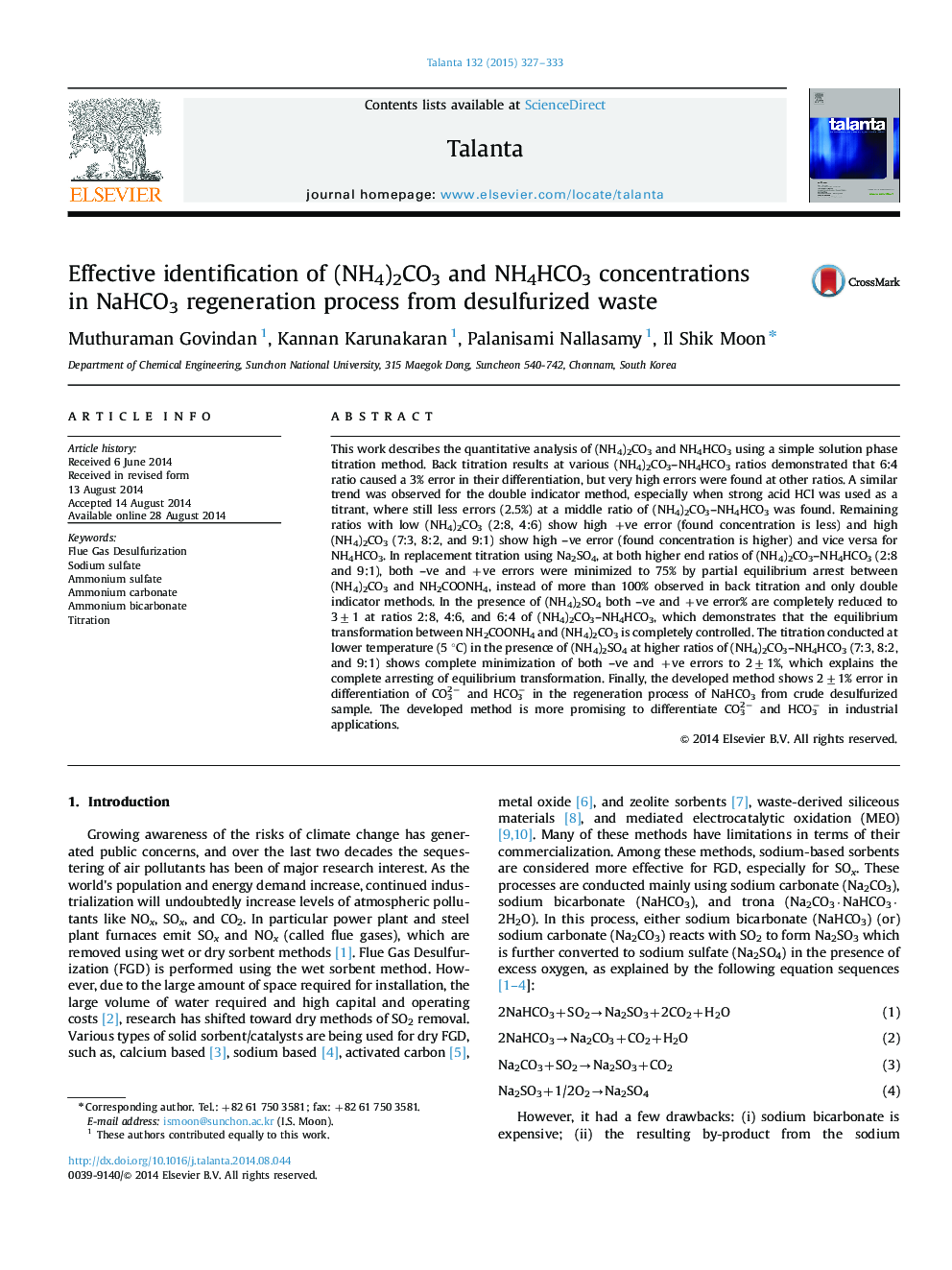| Article ID | Journal | Published Year | Pages | File Type |
|---|---|---|---|---|
| 1242024 | Talanta | 2015 | 7 Pages |
•In NaHCO3 regeneration process, NH4HCO3 & (NH4)2CO3 identification in solution is a key factor.•No titration method enables identification of NH4HCO3 & (NH4)2CO3 at different ratios.•Suitable experimental conditions were developed for different ratios of NH4HCO3 & (NH4)2CO3.•Excess (NH4)2SO4 at 5 °C is more suitable to identify NH4HCO3 & (NH4)2CO3 at all ratios.•A real sample analysis confirms that the developed conditions are accurate.
This work describes the quantitative analysis of (NH4)2CO3 and NH4HCO3 using a simple solution phase titration method. Back titration results at various (NH4)2CO3–NH4HCO3 ratios demonstrated that 6:4 ratio caused a 3% error in their differentiation, but very high errors were found at other ratios. A similar trend was observed for the double indicator method, especially when strong acid HCl was used as a titrant, where still less errors (2.5%) at a middle ratio of (NH4)2CO3–NH4HCO3 was found. Remaining ratios with low (NH4)2CO3 (2:8, 4:6) show high +ve error (found concentration is less) and high (NH4)2CO3 (7:3, 8:2, and 9:1) show high –ve error (found concentration is higher) and vice versa for NH4HCO3. In replacement titration using Na2SO4, at both higher end ratios of (NH4)2CO3–NH4HCO3 (2:8 and 9:1), both –ve and +ve errors were minimized to 75% by partial equilibrium arrest between (NH4)2CO3 and NH2COONH4, instead of more than 100% observed in back titration and only double indicator methods. In the presence of (NH4)2SO4 both –ve and +ve error% are completely reduced to 3±1 at ratios 2:8, 4:6, and 6:4 of (NH4)2CO3–NH4HCO3, which demonstrates that the equilibrium transformation between NH2COONH4 and (NH4)2CO3 is completely controlled. The titration conducted at lower temperature (5 °C) in the presence of (NH4)2SO4 at higher ratios of (NH4)2CO3–NH4HCO3 (7:3, 8:2,and 9:1) shows complete minimization of both –ve and +ve errors to 2±1%, which explains the complete arresting of equilibrium transformation. Finally, the developed method shows 2±1% error in differentiation of CO32− and HCO3− in the regeneration process of NaHCO3 from crude desulfurized sample. The developed method is more promising to differentiate CO32− and HCO3− in industrial applications.
Graphical abstractFigure optionsDownload full-size imageDownload as PowerPoint slide
